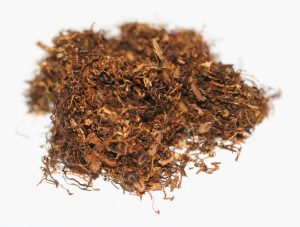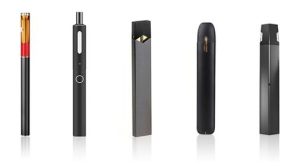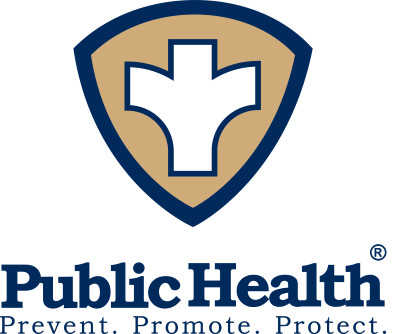The tobacco market is flooded with a wide variety of products. It is important to know that the ONLY products that are recommended for cessation are those approved by the Food and Drug Administration. There is a common misconception that certain nicotine products are harmless and healthy replacements for other products. However, the reality is that many users are switching their addiction from one harmful product to another. Substituting one addiction for another is not quitting, and Brief Tobacco Intervention will still be necessary for these tobacco users. Advise your patients, clients, or employees: “Quit tobacco use, don’t switch tobacco use!”1https://www.lung.org/quit-smoking/e-cigarettes-vaping/quit-dont-switch
Click on the tobacco and nicotine products below to learn more.
Cigarettes

Cigarettes are the most commonly used tobacco product and are responsible for the majority of tobacco-related disease and death. The common components of cigarettes are tobacco, chemical additives, a filter, and wrapping paper. The harmful chemicals in cigarettes can damage nearly every organ in the body.2https://www.fda.gov/tobacco-products/products-ingredients-components/cigarettes

Roll-your-own tobacco is a common form of cigarette that a person creates by rolling loose tobacco in paper and smoking it. These homemade cigarettes have the same negative effects as store-bought cigarettes.3https://www.fda.gov/tobacco-products/products-ingredients-components/roll-your-own-tobacco#:~:text=Roll-your own%20tobacco%20is%20loose%20tobacco%20that%20the%20user,user%20burns%20the%20tobacco%20and%20inhales%20harmful%20chemicals
E-Cigarettes

E-cigarettes, also known as Electronic Nicotine Delivery Systems (ENDS), e-hookahs, vape pens, vapes, mods, tank systems, etc., are battery-powered devices that produce an aerosol when inhaled by heating flavored liquid.
|
Many adult e-cigarette users initially pick up e-cigarettes in an attempt to stop smoking traditional cigarettes; however, e-cigarettes are not recommended for cessation. |
Vaping and smoking share similar negative effects on the body, such as damage to the lungs and every organ in the body, respiratory disease, increased cancer risk and other health conditions such as heart disease and stroke, and an overall increased risk of death. 4https://www.cdc.gov/tobacco/data_statistics/fact_sheets/health_effects/effects_cig_smoking/index.html
The most common misconception is that e-cigarettes emit harmless water vapor. However, the aerosol can contain nicotine, ultrafine particles, flavorings such as diacetyl (linked to serious lung disease), volatile organic compounds, cancer-causing chemicals, and heavy metals such as nickel, tin, and lead. Some e-cigarettes contain about the same amount of nicotine as 20 cigarettes. 5https://www.cdc.gov/tobacco/basic_information/e-cigarettes/Quick-Facts-on-the-Risks-of-E-cigarettes-for-Kids-Teens-and-Young-Adults.html
Cigars

|
Cigars contain the same toxic and carcinogenic compounds found in cigarettes and are not a safe alternative to cigarettes. |
Cigars are rolls of tobacco wrapped in leaf tobacco or a substance that contains tobacco. They differ from cigarettes in that cigarettes are a roll of tobacco wrapped in substances that do not contain tobacco, however, both have similar negative health effects.
The three major types of cigars sold in the U.S. include:
- Large cigars
- Cigarillos
- Little cigars
Cigar smoking in the United States has been a behavior of older men, but the industry’s increased marketing of these products to targeted groups increased the prevalence of use among adolescents. 6https://www.cdc.gov/tobacco/data_statistics/fact_sheets/tobacco_industry/cigars
Smokeless Tobacoo

Smokeless tobacco products are tobacco that is chewed, sucked, or sniffed rather than smoked. Nicotine is absorbed through the tissues of the mouth or nose and can sometimes even be swallowed. Although smokeless tobacco may contain less harmful chemicals than cigarettes, they are not a safe substitute for smoking.
Smokeless tobacco is not a safe substitute for smoking. The health risks involved with smokeless tobacco include addiction, cancer, heart disease, dental disease, pregnancy risk, and poisoning.
|
Smokeless tobacco may often be marketed as a product to aid in smoking cessation. However, smokeless tobacco is not recommended for cessation, and the only products on the market that are safe to aid in quitting are those recommended by the FDA. |
Types of Smokeless Tobacco include:
| Chewing Tobacco | Loose tobacco leaves that come in flavors; also called chew, spitting tobacco, or spit. It is placed between the cheek and gum, and the saliva buildup is either spit out or swallowed |
| Snuff | Finely ground tobacco placed between the cheek and gum; also called dipping. Dry snuff can be snorted. |
| Snus | Moist snuff that is sold loose or in pouches. It is pasteurized with the intent to kill bacteria that can produce cancer-causing chemicals. |
| Dissolvable Tobacco | Powdered tobacco that are pressed into shapes such as tablets, sticks, or strips. They can come flavored or sweetened but are not the same as nicotine lozenges to help people quit smoking. |
Increased risk of disease and death. Long-term risk of smokeless tobacco has been examined in recent American Cancer Society prevention studies. The findings show that smokeless tobacco use is associated with death from heart disease, stroke, cirrhosis, all cancers, lung cancer specifically, and diseases of the respiratory, digestive and genitourinary systems. 7https://www.mayo.edu/research/centers-programs/nicotine-research-program/about-nicotine-dependence/smokeless-tobacco
Hookahs

A hookah is a water pipe that is used to smoke specially made tobacco that comes in different flavors. Hookah is usually done in groups with the same mouthpiece passed from person to person. It is a common misconception that hookah is less harmful than cigarette smoking. However, hookah and cigarettes contain many of the same harmful components and have many similar health risks.
Oral Nicotine Pouches

Oral nicotine pouches are small, pre-portioned bags filled with nicotine powder, flavorings, sweeteners, and plant-based fibers. Like snus, these pouches are placed between a user’s lip and gum. However, the main difference between these pouches and snus is that oral nicotine pouches do not contain any tobacco leaf. These products are frequently marketed as an option to help quit smoking, but it is important to note that they are not approved by the FDA for smoking cessation.
